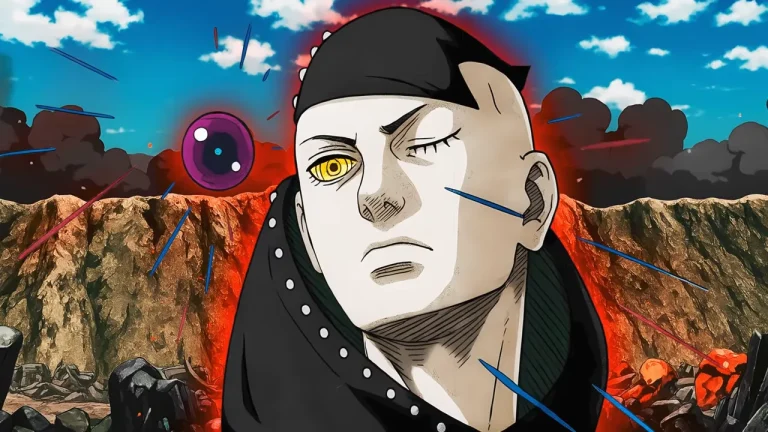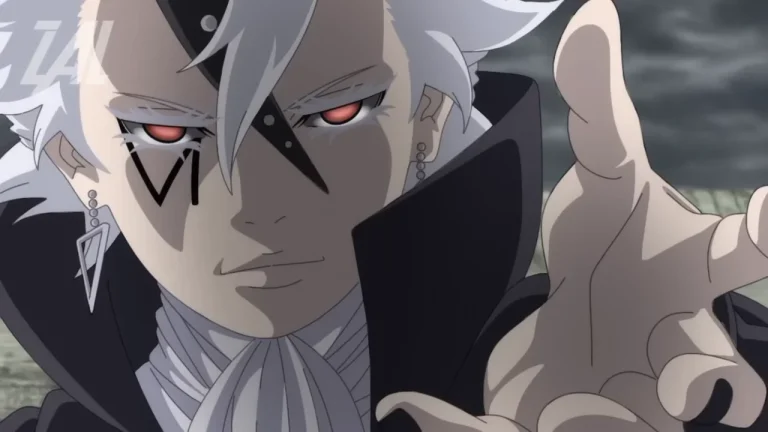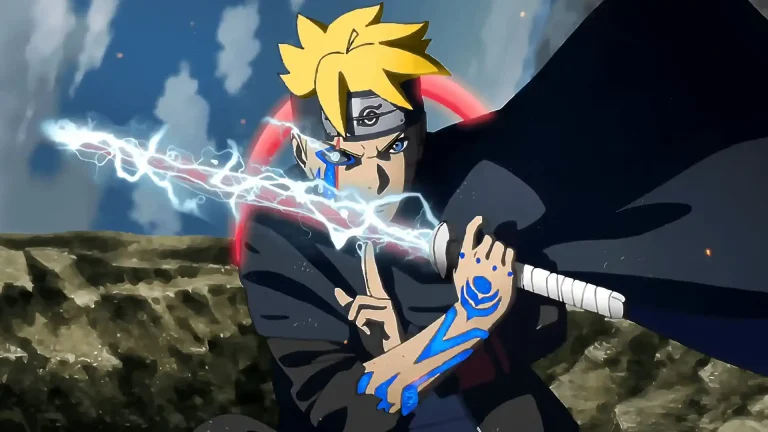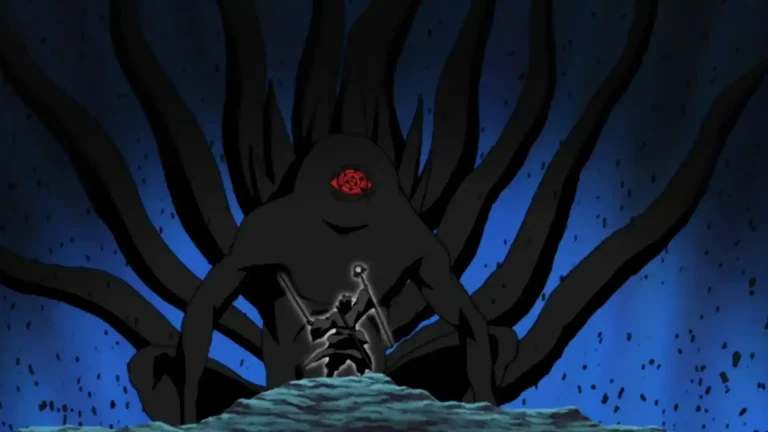Kishimoto and Ikemoto Discuss Boruto, Sasuke’s Survival, and Character Development in a Recent Interview

Kishimoto wanted to kill Sasuke. Ikemoto is the creator of Kawaki. This information came from a recent interview in France that took place yesterday. The appearance of Masashi Kishimoto and Mikio Ikemoto is linked to a company called ADN, which organized a special event in cinemas around the world on August 23 and 24. The event featured screenings of Boruto: The Movie and additional material, including exclusive scenes, interviews with the creators, and discussions about the Naruto and Boruto worlds.
These screenings are tied to the recent resurgence of interest in the franchise with the release of the new Boruto manga arc, Boruto: Two Blue Vortex, and are part of a larger promotional campaign for the manga. I’ll be reading questions and the authors’ answers. At the end of each question, I’ll share my thoughts on everything said. The full interview from yesterday hasn’t been released yet, but there have been some leaks. I’ve selected 10 questions for Kishimoto and Ikemoto.
First question from the journalists: Mr. Kishimoto, what was the most challenging part of collaborating on Boruto?
Kishimoto’s response and I quote: “The toughest part was making decisions about one of the main characters. We had differing views on him. Ikemoto was persuasive and insisted, and I trust him.”
My take: this character is Kawaki. Who else could fit the description of “one of the main characters”? It makes sense sinceBoruto highlights two key characters—Boruto and Kawaki—similar to how Naruto and Sasuke were central in the original Naruto manga. Since Boruto follows classic shonen tropes where a duo of characters with contrasting personalities and destinies often play central roles, Kawaki is the most likely candidate. It seems they struggled to decide on Kawaki’s character for a long time, and the Kawaki we have now is thanks to Ikemoto.
Here’s some crucial information that Kishimoto revealed in one of his answers. The full interview isn’t available yet, and I can’t find the exact question, but here’s what Kishimoto said:
“There was another important character who was also supposed to die, but Ikemoto insisted on keeping him alive. We can’t reveal who that character is.”
My take: Based on what we see in the manga, this character is Sasuke Uchiha. Naruto’s role in the story is set from the beginning and is mentioned in the first episode and chapter. It seems the intention was not to take out the duo as it is now but to kill Sasuke and neutralize Naruto. If Ikemoto insisted on Sasuke’s survival, it might be because he wanted to maintain the connection between Naruto and Boruto’s generations and give Boruto more time to develop as a character. It also opens up more possibilities for the manga’s storyline and Boruto’s character development.
Second question from the journalists: What’s it like transitioning from an assistant to a scriptwriter?
Kishimoto’s answer: “Actually, the main script has been set from the beginning. I trust Ikemoto completely, and I rarely have much to say when we’re making plot decisions. When he sends me the storyboards, I rarely make any significant changes. I wrote the key points of the story draft, which serves as a template for the plot. If any changes are needed, we will discuss them. Every month, Ikemoto creates storyboards with ideas and developments that go beyond my draft.”
My take: Here, Kishimoto shows confidence in Ikemoto, reflecting a smooth transition of responsibility. Despite the significant responsibility, Ikemoto receives minimal revisions from Kishimoto, highlighting his creative independence and brilliance. The current storyline of Borutois is more a testament to Ikemoto’s contribution.
Third question from the journalists: What’s it like working on a long-running manga?
Kishimoto’s answer: “It was physically exhausting. I didn’t have the strength to maintain a high level of quality all the time. There were tough periods and questions that were hard to answer, like the Pain arc. If Ikemoto hadn’t taken over Boruto, I wouldn’t have continued.”
Ikemoto’s response: “When working on a long manga, you must keep up with the times and trends. The script has evolved significantly and is quite different from the original concept. For instance, Code was supposed to die long ago, and initially, Kashin Koji wasn’t meant to be involved in Amado’s escape to Konoha. But these changes make the manga even more interesting.”
Fourth question from the journalists: Mr. Kishimoto, is there any character from Naruto you wish you had developed more?
Kishimoto’s answer: “Yes, Sakura is the only character whose parents were never shown. I did this for the film format but never included it in the manga. I wanted to, but I missed the opportunity, and by the middle or end of the story, it was too difficult to introduce them into the plot.”
This response suggests that Sarada has a better chance for deeper development in the manga. Sarada is a new central figure in the Uchiha clan and an important character. Also, it’s worth noting that she has feelings for Boruto, which connects her to the main character and adds another layer to her character.
Fifth question from the journalists: Ikemoto, what are your thoughts on fashion?
Ikemoto’s answer: “How people dress reflects their self-image. Sarada has such a big jacket that it falls off her shoulders, but it’s Boruto’s favourite brand, which she bought after he disappeared. Boruto is responsible, respects Sasuke, and always wants to be like him. He is very particular about his appearance because he’s privileged and well-off, so he wears his master’s clothes. On the other hand, Kawaki has never thought about such things. He wears the clothes Amado gave him and doesn’t care much about his appearance, wearing only what Eida tells him to buy.”
Sixth question from the journalists: How do the character developments of Naruto and Boruto differ?
Kishimoto’s answer: “Naruto is a boy who starts with nothing and ends up with everything, while Boruto, on the other hand, starts with everything but will lose everything and have to live with that. Boruto has something of Sasuke in him because he loses everything, just like Sasuke, and, like Naruto, he will do anything to get what he wants.”
Seventh question from the journalists: What are the differences in the relationships between Naruto/Sasuke and Boruto/Kawaki?
Kishimoto’s answer: “Naruto and Sasuke differ on the surface, but deep down, they are similar. Both have experienced loneliness, which is what connects them. Boruto and Kawaki, however, are completely different and have nothing in common.”
Ikemoto’s answer: “In the relationship between Naruto and Sasuke, Naruto, as the main character, shows affection towards Sasuke and opens up. In the relationship between Boruto and Kawaki, it’s more Kawaki who shows affection towards Boruto, rather than the other way around.”
They have different levels of attachment. As Ikemoto notes, Kawaki shows affection towards Boruto, while Boruto, despite the growth and development of their relationship, doesn’t initially display the same level of attachment. This creates a dynamic where Kawaki may be more open and vulnerable, even if he denies it, while Boruto might be more reserved or mistrustful, although he’s trying to revert things to how they were.
Eighth question from the journalists: What’s the process of creating a character?
Ikemoto’s answer: “To make things interesting, I add unusual traits that help envision the character’s behaviour, but it’s not always straightforward. For example, Ada can control the world but is solely focused on love and is a bit silly. Hidari uses the same techniques as Sasuke, and his behaviour is similar to Sasuke’s in many ways, but he’s actually nothing like him—he’s quite an oddball.”
Ikemoto mentions adding unusual traits to make characters stand out more. This can mean quirky or contrasting characteristics that set a character apart. That’s why the new Shinju isn’t Shinki but Naruto. I wrote an article about this—check it out. It’s cool.
Ninth question from the journalists: What are your favourite animals in your works?
Kishimoto’s answer: “Gamabunta.”
Ikemoto’s answer: “Kashin Koji’s frog, because it’s a piece of ninja scientific weaponry. With AI advancements, there’s talk about robots having souls, which always reminds me. Or Mitsuki’s snake.”
Ikemoto’s choice of Kashin Koji’s frog and Mitsuki’s snake reflects deeper, more philosophical thoughts. Kashin Koji as a “scientific weapon” is fascinating because it combines technology and nature. It represents how technology can interact with and transform living beings. This shows that Ikemoto’s ideas are all the ninja weapons, cyborgs, and such in the manga, which I find really compelling. It makes the manga even more intriguing.
Tenth question from the journalists: Do you have any advice for young mangaka?
Kishimoto’s answer: “I’m not saying it will always be enjoyable, but try to find something you love because I think it matters. No matter how much effort you put in, it shows when someone is enjoying themselves and always pushes you to strive for more. That’s the driving force.”
Ikemoto’s answer: “Put what you love into your manga. For instance, many have commented on Sarada’s outfit, but I like it, so I keep it that way. Or, a girl wears heels even though she’s a ninja. It’s a fresh take, and she’s great with chakra, so why not? I’d keep doing what I love because it motivates me to give my best.”
My take: Or a question for you reading this article. Do you still consider Masashi Kishimoto to be the true author of the Borutomanga? The current author is Mikio Ikemoto, a new genius in the manga world.
For readers interested in the ongoing evolution of Boruto and the creative process behind its development, this interview with Masashi Kishimoto and Mikio Ikemoto offers deep insights into how pivotal character decisions were made, including some surprising revelations about Sasuke’s fate and Kawaki’s design. The full interview, which provides a rare glimpse into the collaboration between these two great minds, is essential for understanding the direction of Boruto: Two Blue Vortex. If you’d like to explore more about Boruto’s journey and its key themes, check out my article on how Boruto’s character development parallels Naruto’s original journey and what makes these relationships central to the story.






